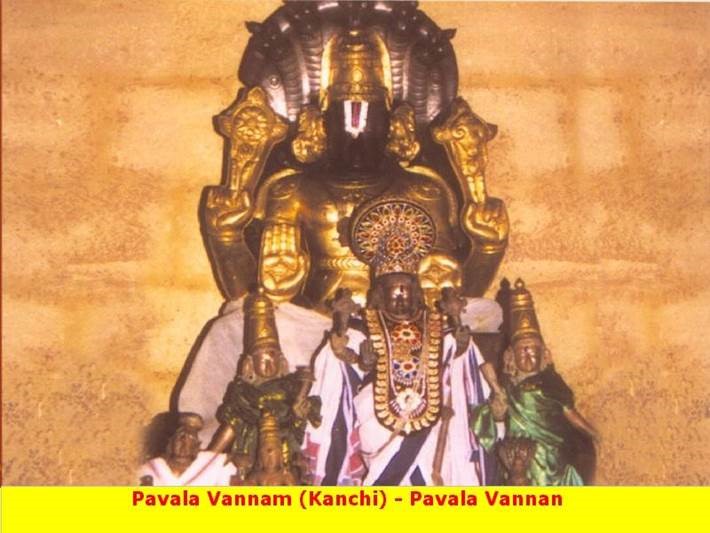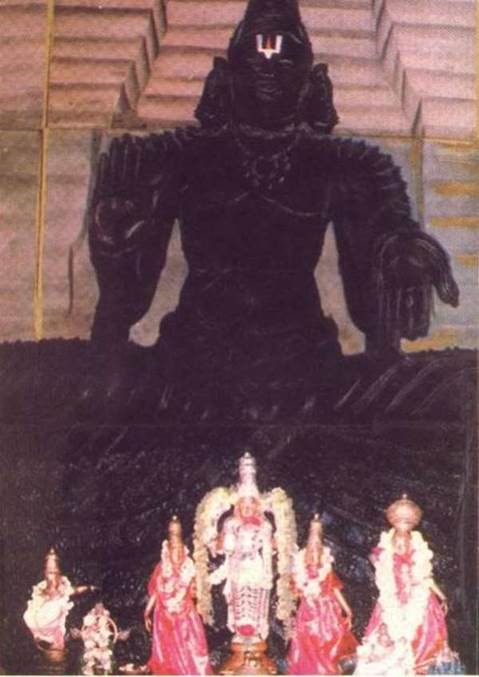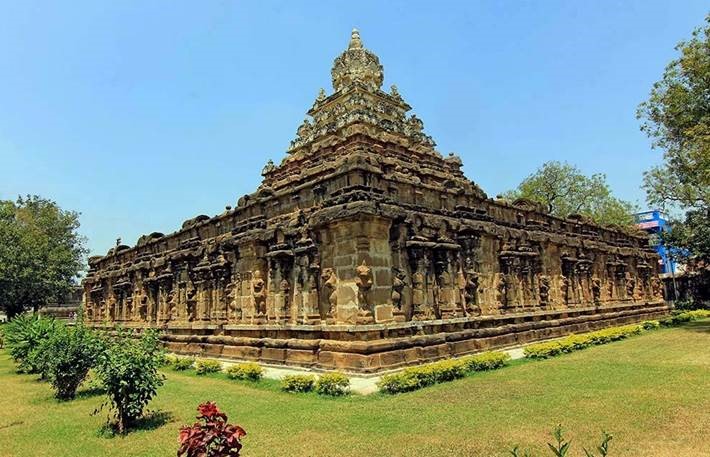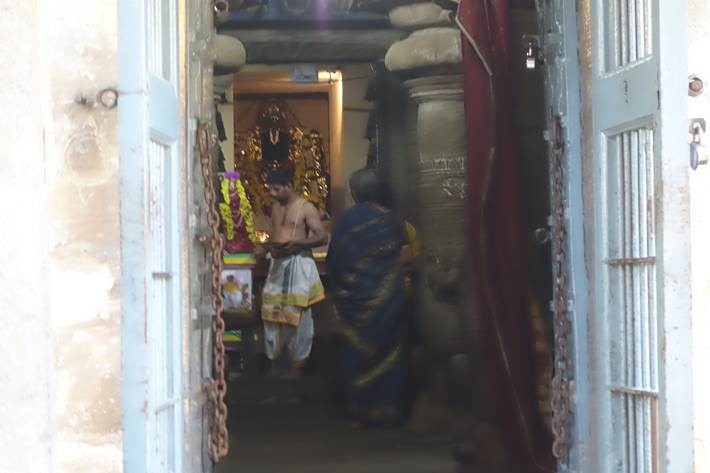Sri Ekambaranathar Temple (or “Lord of Mango Tree”) is the largest temple of Kanchipuram. Sri Chaitanya-Charitamrita Madhya lila 9.68 mentions, Sri Chaitanya Mahaprabhu visited this temple during His tour to South India – “Arriving at Siva-kanchi, Chaitanya Mahaprabhu visited the deity of Lord Siva. By His influence, He converted all into Vaisnavas.” Thiru Nilathingal Thundam is one of the 108 Divya Desams of Lord Vishnu situated in Sri Ekambaranathar temple. The shrine is in the north-east corner of the temple.
When mother Parvathi was doing tapasya (penance) beneath a mango tree, Lord Siva wanted to test the strength of her tapasya. So, he set the mango tree on fire. Then, Parvathi sought the help of Lord Vaman. After hearing the request of Parvathi, Sri Vamana with four hands with Sankha (conch) in one hand and Chakra (disc) on the other, took out the Chandran (moon) from the head of Lord Siva. With the cool rays, Lord Vishnu made the fire cool and made the mango tree grow once again. After this, Parvathi went back to do the tapasya. Lord Siva wanted to test her again and sent Ganga, the river. When Ganga came very fast to destroy the tapasya of Parvathi, Parvathi explained her that both of them are sisters. Inspite of hearing this, Ganga River didn’t want to stop and tried to destroy her and her tapasya. At that time, Parvathi made a Siva lingam out of sand and elapsed the Linga with all veneration and embraced it. The Linga could not wash away by the water of Ganga. Siva was pleased with Parvati’s devotion. This is the Sthala Puranam of this temple. Lord Siva is worshipped in the form of earth Linga (made out of river sand). The temple tower (Gopura) is eleven storey structure adorned with excellent sculptures. This is one of the tallest temples in South India. There is a Linga in the prakaram of this tree which is a composite of 108 Lingas and another one of 1008 small Lingas.
To help Parvathi, Lord Narayana took the Chandran (moon) from Lord Siva’s head, he is called as “Nila Thingal Thundathan” and so the sthalam is called as “Thiru Nilathingal Thundam”. This Divya desam is found inside Ekambareswarar temple. Since, this temple is taken care by Siva Acaryas; the poojas for Sri Vishnu is done by a Siva priest only. There is a mango tree in the temple dating back to 3,500 years. The divine tree with its four branches representing the four Vedas yields fruits in four flavours – sweet, citric, spicy and bitter.
Vishnu is prayed here as Vamana murthy and the shrine is hailed by the Azhwar saints as one of the 108 Divya Desams. The presiding deity of the Lord Vishnu’s temple is ‘Lord Nilathingal Thundathan‘, also known as Lord Chandra Chooda Perumal. He is in a standing posture, facing towards the west. His consort Mahalakshmi is named as Ner Oruvar Illavalli Nachiyar and also called as Nilathingal Thunda Thaayar. The Pushkarani (temple tank) of Sri Nilathingal Thundathan Perumal Temple is called as Chandra Pushkarani.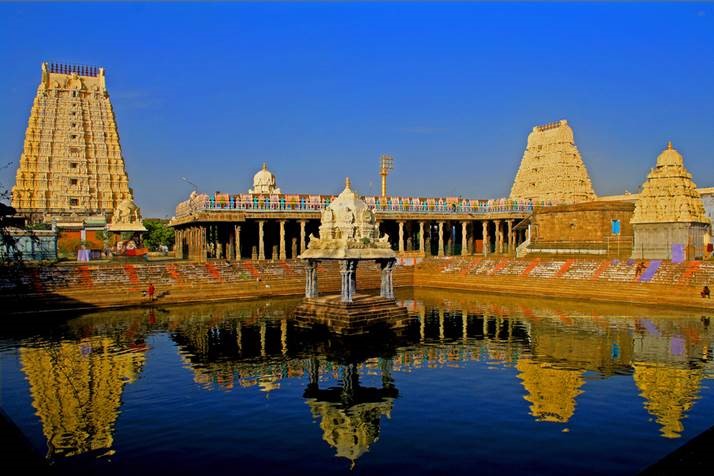
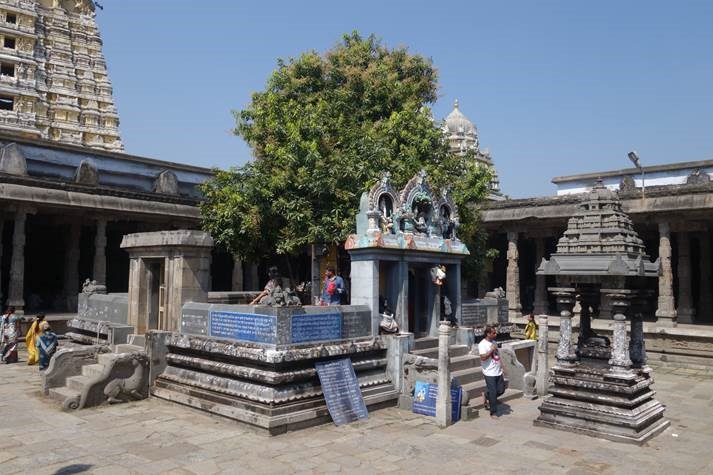
Mango tree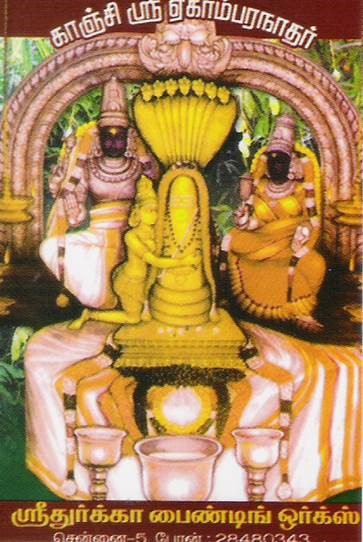
Sri Ekambaranathar
